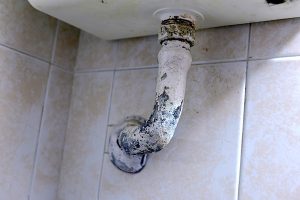Fayette County is taking another step toward establishing a stormwater utility, which will mean yet another bill for property owners in unincorporated Fayette County and the towns of Tyrone, Brooks and Woolsey.
The Fayette County Commission voted Thursday to spend $109,000 for a more detailed analysis of the county’s stormwater system that includes drainpipes, culverts and the like. In a presentation, consultant Dan Davis of Integrated Science and Engineering showed that some of the county’s stormwater system is deteriorating and will need to be repaired or replaced in the future.
Stormwater pipe underneath roads can fail, leading to the shutdown of that road for several days while repairs are made, Davis said.
He suggested that the stormwater billing system take into account the amount of impervious surface on each individual property, a method that has held up in court.
Davis also noted that even owners of tax-exempt property would pay the stormwater bills along with other residential, commercial and industrial property owners.
Commission Chairman Jack Smith said he had “some real concern” about implementing the utility “until we make our way through this economic malaise we are in.”
Smith said he didn’t doubt the county needed to look into future plans for its stormwater system, but he was reluctant to go forward at this point.
Commissioner Lee Hearn noted that if there are only 30 stormwater utilities in Georgia, he would be interested to hear how the other 129 counties are handling the matter.
Ultimately the final decision on implementing a stormwater utility will be left up to the commission next year, which will have two new members: Steve Brown and Allen McCarty, who will be replacing Smith and commissioner Eric Maxwell.
Depending on the rate chosen by the commission, a stormwater utility could raise between $239,000 and $1.4 million a year, Davis said.
Davis said the county should first determine the level of service it wants to provide and then determine at what rate the utility should be funded.
Currently the county is using its public works crews to make stormwater system repairs, but with a utility the county would need to hire a crew dedicated to the task along with a GIS analyst and technician and a staffer to coordinate future drainage system improvements, Davis said.
The data from the stormwater system analysis will provide the county with information on more than 17,000 parcels that can be used to compile the billing system, Davis said.
Included in the $109,000 amount awarded to ISE is work with a stormwater advisory committee that will be selected by the county to help guide implementation of the utility.
The funds will come from $275,000 the county had set aside for flood plain mapping, but should the utility be enacted the county can reimburse itself for the costs with revenue from the utility.










Leave a Comment
You must be logged in to post a comment.